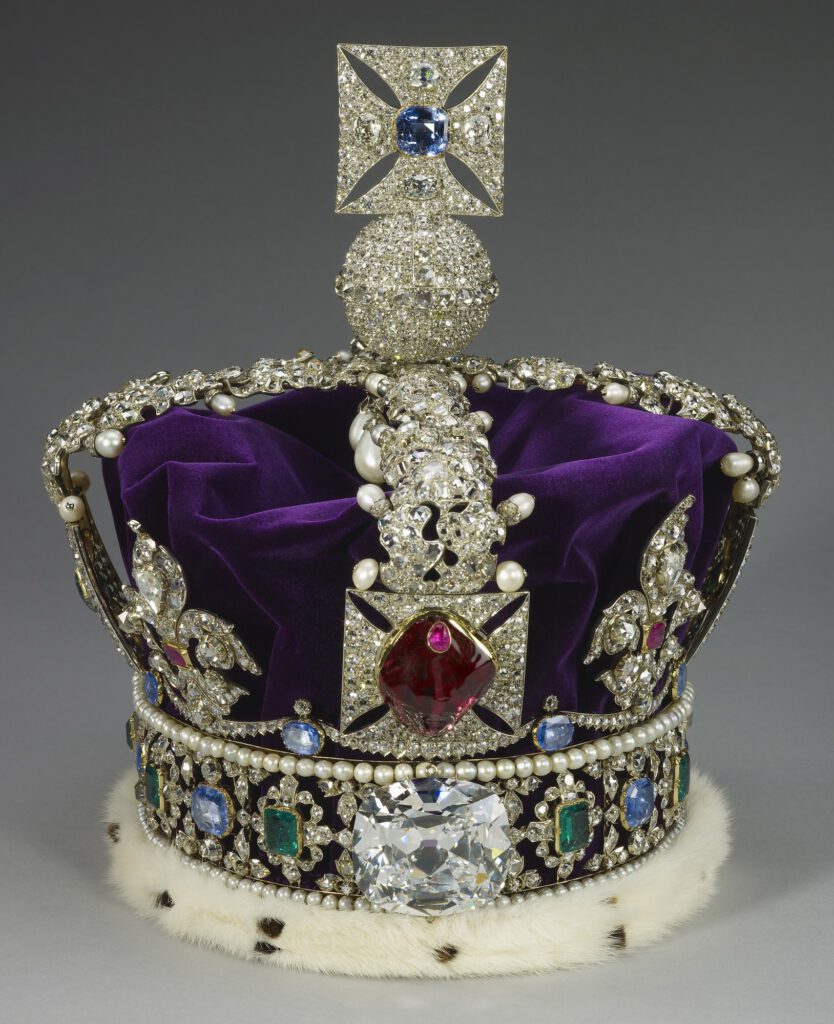The Imperial State Crown, or Crown of State, is the crown the monarch exchanges for St Edward’s Crown, at the end of the Coronation Ceremony. Before the Civil War the ancient Coronation crown was always kept at Westminster Abbey and the monarch needed another crown to wear when leaving the Abbey. The Imperial State Crown is also used on formal occasions, such as the annual State Opening of Parliament. The term imperial state crown dates back to the fifteenth century when English monarchs chose a crown design closed by arches, to demonstrate that England was not subject to any other earthly power.
This crown was made for the Coronation of King George VI in 1937 but is closely based on a crown designed for Queen Victoria in 1838 by the crown jewellers of the time, Rundell, Bridge & Rundell. The crown is mounted with several historic stones including St Edward’s sapphire, Queen Elizabeth’s Earrings, The “Black Prince’s Ruby”, The Stuart Sapphire and the Cullinan II, or the ‘Second Star of Africa’, weighs 317.4 carats. It is the second largest stone cut from the great Cullinan diamond.
